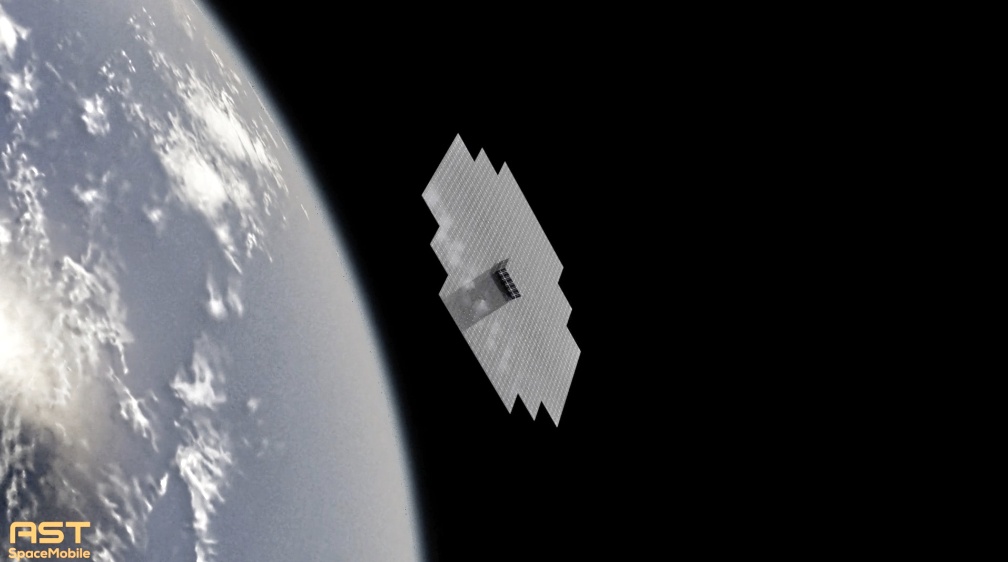A new satellite launching this weekend BlueWalker-3 could be conspicuously bright once it’s unfurled in orbit.
A routine SpaceX Starlink launch this coming weekend carries an unusual passenger, that you many be able to easily see gliding through the increasingly crowded night sky.
The launch is set to occur along with Starlink Group 4-2 from launch pad LC-39A from the Kennedy Space Center in Florida on Saturday, September 10th, at 9:10 PM EDT/1:10 UT (on the 11th). SpaceX ‘s Falcon-9 rocket will send the 60 table-sized Starlink satellites into low Earth orbit, then land the Falcon 9 stage one booster now on its 6th flight back on the ‘A Shortfall of Gravitas’ landing platform at sea.
(Launch VIDEO)
Note that the launch itself goes off around two hours after local sunset and could potentially put on a very photogenic show for the Florida Space Coast as the tendrils of the ‘SpaceX Jellyfish’ rise to greet the last rays of sunlight. The U.S. Eastern Seaboard will likely see the burning red stage two Merlin engine crossing the sky, looking like a glowing red ‘comet’ as the mission heads northward out across the Atlantic.

The extra passenger of interest is Texas-based AST SpaceMobile’s Bluewalker-3 satellite. The mission is a test demonstrator for the company’s Larger BlueBird satellite constellation, which will eventually field 110 satellites in low-Earth orbit for global coverage.
The aim is to provide broadband connection from orbit direct to mobile phones. The deployment has been beleaguered by supply chain setbacks, the global pandemic and technical issues, but AST SpaceMobile seems poised now to finally test the system in orbit, ahead of the full deployment and roll-out of the BlueBird satellite constellation by 2024. Soon, you may be able to simply access connectivity via a pull down app on your phone… no bulky intermediary receiver needed. AST SpaceMobile’s BlueBird system could even beat SpaceX’s Starlink/T-Mobile partnership announced last week to fielding this next generation satellite internet system.
Rise of the Megasats
Of course, SpaceX’s new generation of Starlink minus visors are still bright as well. More companies plan to follow AST SpaceMobile’s lead will direct access connectivity, to include Virginia based Lynk Global which will also launch with SpaceX starting in November 2022.

But like advent of Starlink, the upcoming deployment of BlueWalker-3 has given many a satwatcher pause. The satellite will feature a reflective 64-meter square antenna (8-meters or ~24 feet on a side) once unfurled. For context, the inflatable Echo-1 sphere launched by the U.S. in 1960 was only slightly larger (30 meters across) and was easily visible to the naked eye at around magnitude 0.

As of writing this, Starlink looks to be deploying the Group 4-2 batch in a 53.2 degree inclination orbit, suggesting that BlueWalker-3 will follow the same path. Early sighting opportunities suggest that BlueWalker-3 will be visible from latitudes 20 to 40 degrees north at dusk, and 0 to 30 degrees south at dawn.
What can you do? Certainly, as we’ve stated before, our opinion on the Starlink controversy is nuanced: as a frequent traveler to remote locales, I like the idea of being able to keep connected and working while nomadic… but international oversight is also needed to protect the night sky. Actually, the battle against light pollution far predates Starlink.
What you can do is watch and document what you see. We’ll be tracking the launch and sightings of Bluewalker-3 worldwide and tweeting how bright it actually is as @Astroguyz on Twitter. We’ll also post preliminary and proper IDs and orbital elements for BlueWalker-3 once they’re posted for tracking on platforms such as Heavens-Above, Celestrak, Orbitron etc.
It’s a brave new era, one that holds both the promise of true mobile connectivity, but also the warning of a night sky where the artificial ’stars’ may one day outnumber natural ones. Be sure to chronicle what you see, as Bluewalker-3 takes flight this weekend.

